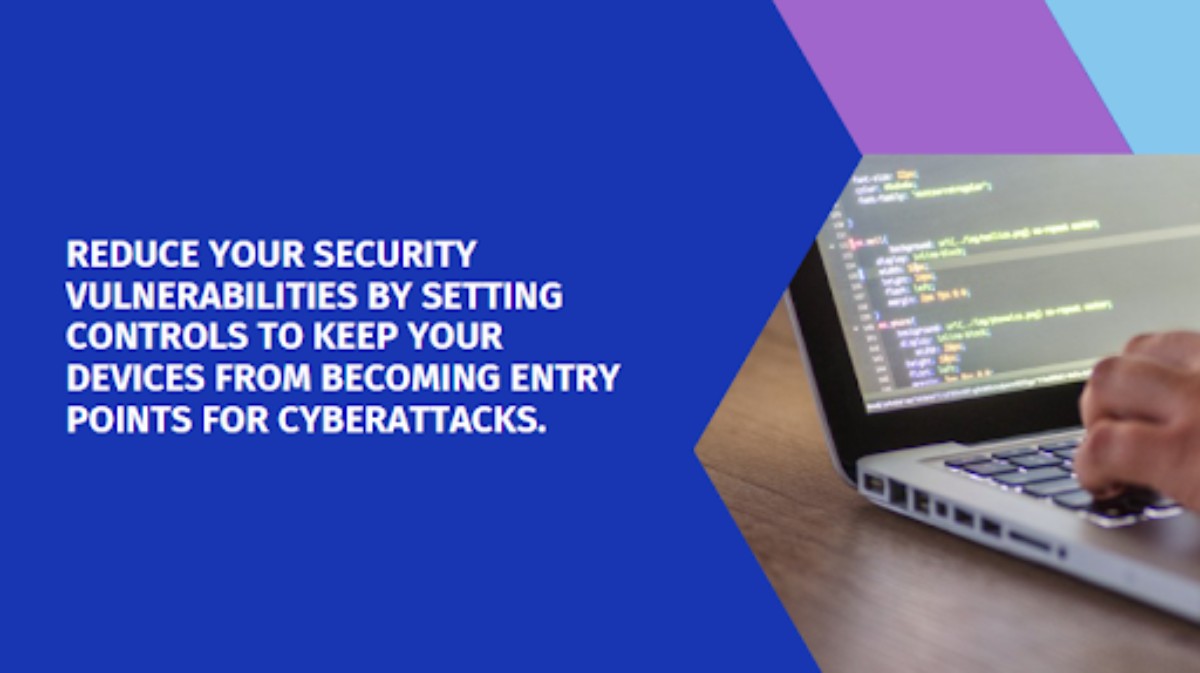Cybersecurity Measures: Cybercriminals are getting more sophisticated with their attacks.
Cybersecurity measures are the steps taken to protect computer systems and networks from cyberattacks. These attacks can come from a variety of sources, including hackers, criminals, and even foreign governments. Cybersecurity measures can include both technical and non-technical solutions.
Basic cybersecurity controls, while essential, are no longer enough to keep your systems, networks, apps, data, and everything else safe from threats.
That is why it’s critical to strengthen your cybersecurity controls to minimize security risks and prevent attacks from succeeding.
While there might not be 100% guaranteed protection from cyber threats, there are ways to fortify your cybersecurity defenses against online attacks, which we’ll share in this guide.
Table of Contents
ToggleCybersecurity: A Brief Overview
From a 30,00 feet perspective, cybersecurity refers to the controls and measures you take to keep your electronic data, networks, operating systems, applications, safe from theft and damages.
It applies to both your hardware and software is crucial for keeping private information safe.

Cybersecurity measures include detecting, preventing, and responding to cyber threats and attacks, ranging from simple to complex controls, such as firewalls and automated vulnerability scans.
4 Cybersecurity Measures To Strengthen Your Protection
Know some of the security measures you can implement to increase your protection from cyber threats.
1. Automate critical aspects of cybersecurity
Finding gaps and weaknesses in your cybersecurity controls and infrastructure can be a long and painful process.
Miss one and cyber attackers could easily exploit that to launch an attack that can cost you data privacy, your reputation, and even boatloads of money.
The solution? Streamline the process of finding cybersecurity vulnerabilities through automated penetration testing.
Automated pen testing uses automation tools processes to run non-manual, efficient tests.
For instance, instead of pen testing experts going through lines of code to spot errors, testers can use a scanner to automate the process, saving a huge amount of time and effort and offering better accuracy.
Essentially, software and digital tools execute the tedious tasks human pen testers usually do, imitating a tester’s action depending on what the test requires.
When prompted, the automated tool connects to your network system and goes through the infrastructure by conducting a general scan.
The scan then directs the tool to the defined scope of duty. You might need several tools or test programs to handle all the test requirements, deploying multiple tools with various functions for specific test purposes.
Let’s say an automated pen-testing tool’s purpose is to check the Graphical User Interface (GUI) and frontend user function.
In this case, after a general scan, the tool starts to probe the essential GUI and user function associated details, such as logging in.
Relative exploitation or attack (such as a brute force attack) is then simulated to uncover security vulnerabilities.
Doing all this manually can be a time-consuming, laborious process. Using automated pen-testing streamlines this process, saving you a huge amount of time, energy, and even money.
Plus, automated tools offer more accuracy since these are less likely to miss errors or gaps during scans, increasing your level of protection against cyber attacks.
2. Strengthen Your Security Controls
Security controls, including devices, policies, and software, are powerful tools and methods designed to keep your critical data and systems safe.
However, security controls are often complex, making it challenging to manage them seamlessly. For instance, your enterprise antivirus software can have multiple pages of settings options.
Any incorrect or overlooked configurations can lead to vulnerabilities you might not detect until it’s too late and a hacker has already breached your systems and stolen your data.
This is where a Breach and Attack Simulation (BAS) platform comes in handy.
BAS is a cost-efficient solution to strategically and systemically find and address weaknesses in your security controls.
It works by performing actions mimicking real threats to assess if your security controls can catch them.
For example, BAS can send an email containing malware to check if your email filter can detect it or try to send data traffic through your firewall.
BAS platforms use complex sets of attack scenarios that will attempt to bypass your existing security controls to reach specific goals.
If the BAS platform reaches the goals, then it has helped you discover a particular hole in your control you need to remedy.
You can leverage the MITRE ATTACK framework, a knowledge base and a model of adversary techniques and behavior based on real-world observations for your breach and attack simulations.
The framework reflects the various stages of an adversary’s attack lifecycle, including the platforms they commonly target.
You can set up BAS to run repeatedly and even automate the simulation to ensure your security controls are tight and updated. The simulation can run in the background, so it doesn’t interfere with your operations.
3. Protect Your Devices
Laptops, desktops, smartphones, and other devices are the main targets of malware.
A single piece of malicious software that slips through your existing cybersecurity controls can infect a device with malware and spread it to your numerous programs and files.
Depending on the purpose of deploying the virus, the malware can even use your device’s computing power to delete your critical files and perform broader attacks.

Mitigate these risks and kick your security controls up a notch by considering these tips on protecting your device from malware.
- Use antivirus software that covers all your systems and devices, including your smartphones and tablets.
- Avoid connecting your devices to public Wi-Fi Connection, especially for activities requiring you to share personal information such as your credit card details. Invest in a reliable Virtual Private Network (VPN) to help ensure the data you share does not leak to a public network.
- Update your antivirus and antimalware software regularly to ensure they have the latest security patches.
- Deploy web or URL filters to help block potentially harmful websites containing spyware, malware, and other dangerous software that easily infect your systems through your devices.
- Use a proxy server to improve your data security by hiding your IP address, encrypting your connections, and blocking unwanted traffic. You can use private proxies or proxies from a free proxy list. Just make sure that the free proxies come from a reputable proxy provider.
Reduce your security vulnerabilities by setting controls to keep your devices from becoming entry points for cyberattacks.
4. Understand The Types of Cyber Threats
An excellent way to strengthen your cybersecurity is to know the various threats you should be protecting your data and systems from.
Some of the common cybersecurity threats include:
- Phishing. Cybercriminals can trick you into clicking malicious email links by impersonating legitimate institutions and their representatives. Most phishing attacks aim to convince you to disclose your personal data or infect your systems with malware.
- Man in the middle attacks. MitM attacks happen when hackers intercept two-party communications. They interpret the communication and might steal confidential information while continuing to return responses to the unknowing parties.
- Structured Query Language (SQL) injection attacks. SQL injection attacks occur when hackers upload malicious SQL scripts to try and access a database. A successful SQLi attack allows cybercriminals to view, modify, or delete your data within the SQL database.
- Denial-of-Service (DoS) attack. The goal of a DoS attack is to flood your servers, networks, and systems with massive traffic, so it fails to fulfill legitimate requests.
- Advanced Persistent Threats (APT). This attack happens when cybercriminals gain unauthorized access to your system or network and remain undetected for a long time.
- Zero-day exploit. Zero-day attacks happen when a hardware or software vulnerability gets announced, and malicious actors exploit the weakness before a solution or patch is implemented.
- Domain Name System (DNS) attacks. As the name implies, a DNS attack is when hackers exploit DNS vulnerabilities to divert your website visitors to malicious pages. The attack known as DNS tunneling can also exfiltrate data from your compromised systems.
- Ransomware. This type of malware attack occurs when cybercriminals encrypt or lock your data. Hackers will threaten you by blocking information access or publishing sensitive data unless you pay a ransom.

Understand the various types of cyber threats to help you set the right security measures to mitigate potential risks and keep everything safe in the event of an attack.
For instance, you could raise awareness and instill a cybersecurity culture to equip your employees to safeguard against attacks such as phishing scams.
Knowing the common cyber threats will also help shape your cybersecurity policies and best practices and fortify your existing security controls.
Level Up Your Cybersecurity Measures
Strengthening your defenses against cyber threats is crucial to keep your systems, networks, and data protected in the face of emerging and more advanced attacks.
Assess your existing cybersecurity controls, identify weaknesses, address gaps, and establish stronger and better measures to mitigate risks and minimize potential damages during attacks.
While improving your security measures requires more work and investing in reliable tools, start with the tips in this guide to kickstart your efforts.
Also Read: How To Create A Smart Branding Strategy For Your Business?
Related posts
Hot Topics
Understanding TruthFinder’s Background Check Features
Background checks have become increasingly relevant for personal safety and information gathering in digital environments. TruthFinder offers comprehensive background check…
How MLOps Is Shaping the Future of AI in Business
Artificial intelligence (AI) has evolved from a futuristic idea to a strategic necessity for companies looking to innovate, grow, and…



